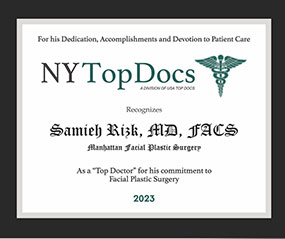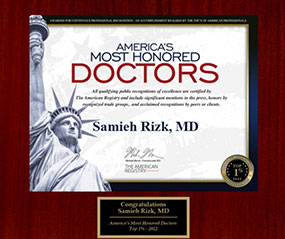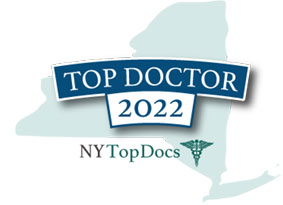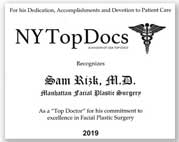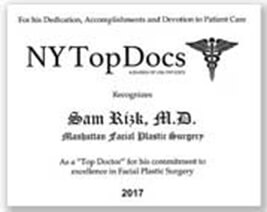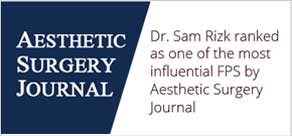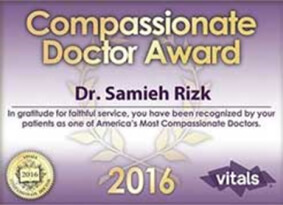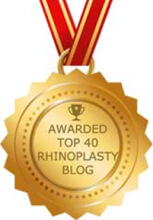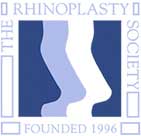Dr. Rizk is a double board-certified facial plastic surgeon that conducts chin and cheek surgery in NYC. In many cases, he may recommend chin and cheek surgery in New York to help patients achieve more symmetrical facial proportions, as the size of the chin may magnify or minimize the perceived size of the nose. To find out more about Dr. Rizk’s chin and cheek implants in NYC, contact his practice and book a consultation today.
Overview of Chin and Cheek Surgery in NYC
Cheek surgery can help patients achieve symmetry for a more youthful, natural appearance. Chin and cheek surgery in New York can help provide a harmonious balance to your facial features so that you feel better about the way you look.
Chin augmentation surgery2 takes approximately 1 to 1.5 hours to perform. Either sedation or general anesthesia is appropriate for this surgery. With either sedation or general anesthesia, the patient is asleep and unaware of the procedure. The surgery is performed in Dr. Rizk’s state-of-the-art surgical facility as outpatient surgery, so you can go home the same day and return to work typically after one week.
Moreover, if a fat transfer is performed, it also takes about 1 hour to harvest and inject, and it is performed under sedation or general anesthesia as well. The patient goes home the same day and no hospital stay is required because this is typically an outpatient, office-based surgery.

Real Patient Results
This patient is 37 yo female who complained mainly about her profile. There is an imbalance between her nose and chin. She wanted a very conservative bump reduction. Nose was re-projected (brought closer to face), bump was reduced and tip was lifted slightly and a chin implant was also placed for facial balance. Postoperative pictures are shown at 1 year.
Dr. Rizk’s Approach
There are 2 main approaches for chin implant placements:
- Placement from inside the mouth (called intraoral).
- Placement from a small incision under the chin.
Dr. Rizk performs the surgery using a small incision under the chin because intraoral placement has a higher incidence of infection due to contamination of the implant with mouth bacteria. In addition, he prefers the approach of a small incision under the chin, which becomes inconspicuous over time, because of the better placement of the chin implant and a lower chance of implant movement inside the chin. He primarily does not perform the intraoral placement due to the high risk of infection.
How Cheek and Chin Implants Can Improve Your Appearance
Also known as chin augmentation surgery, a chin implant is a procedure that is performed to improve the appearance of a weak chin in order to bring balance to your face by altering the shape of your mentum. The implant may be made from synthetic materials, such as silicone, Gore-Tex3, or Medpor, or it can be created from bone and fat harvested from the patient’s body.
Ideal Candidates for Chin and Cheek Surgery
Dr. Rizk performs chin augmentations on patients in overall good health who are looking to improve their appearance by altering their chin. Patients are often interested in fixing a small chin, or other issues such as when the lower portion of the jaw bone lies behind the lips, or when the lower lip becomes more prominent than the chin. This condition is called microgenia or a “weak chin” and it is sometimes associated with a large nose. NYC chin and cheek surgery with expert surgeon Dr. Rizk can significantly improve facial balance.
Dr. Rizk in the Media
Ideal Candidates for Chin and Cheek Surgery
Dr. Rizk performs chin augmentations on patients in overall good health who are looking to improve their appearance by altering their chin. Patients are often interested in fixing a small chin, or other issues such as when the lower portion of the jaw bone lies behind the lips, or when the lower lip becomes more prominent than the chin. This condition is called microgenia or a “weak chin” and it is sometimes associated with a large nose. NYC chin and cheek surgery with expert surgeon Dr. Rizk can significantly improve facial balance.
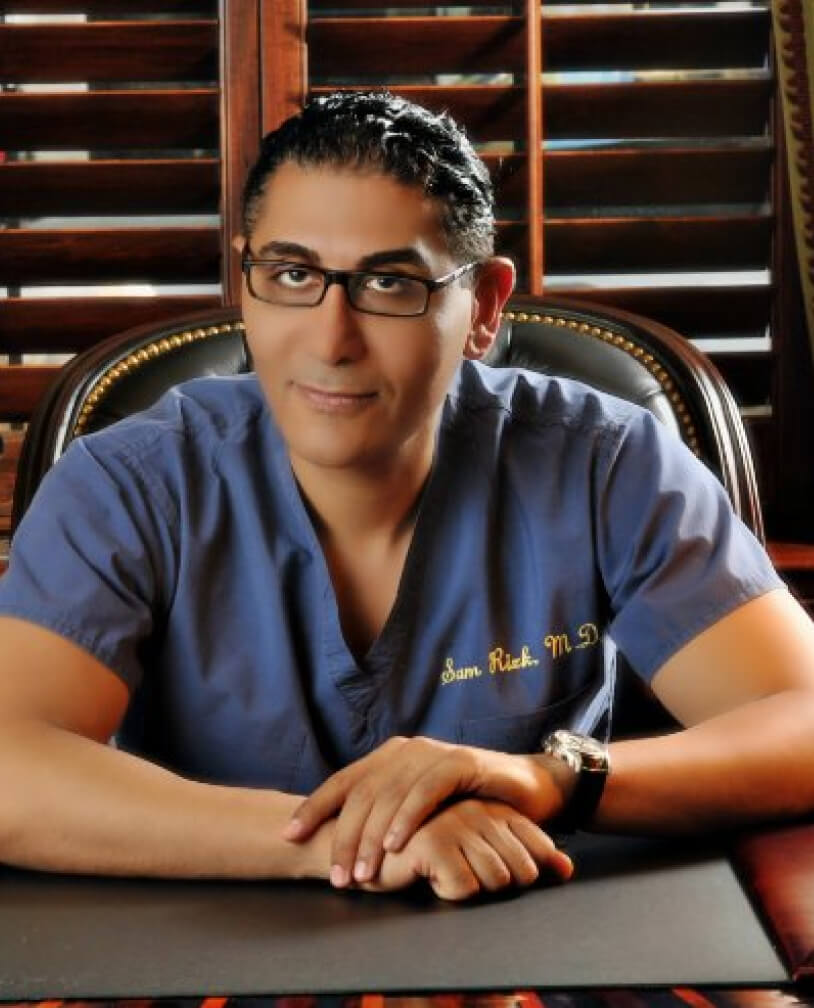
Risks and Side-Effects Associated with Chin and Cheek Surgery
All surgical procedures have risks and possible complications. Chin and cheek implant surgery carry a small risk of:
- Bleeding
- Temporary pain and discomfort
- Movement or extrusion of the implant
- Small possibility of infection
- Rare side effects such as allergic reactions and implant rejection
Dr. Sam Rizk selects his patients carefully to minimize risks and complications. smokers, diabetics, and patients with a poor immune system are at higher risks of complications and infection. Dr. Sam rizk places the implant deep under the chin muscles so that the chin muscles act as a cushion in case trauma occurs or patient sustains an injury to the chin. By placing the chin implant deep, this protects the implant and decreases its chance of movement.
Results and Recovery Expectations
During your recovery period, you may experience some swelling, bruising, and numbness. To increase your comfort during the recovery period, we recommend that you eat soft foods until any pain and numbness have diminished.
Most patients report that pain after chin augmentation is mild. You will need to return to Dr. Rizk’s New York City office 5 to 7 days after your procedure to have your sutures removed. This is typically performed at the same time as your post-rhinoplasty follow-up if you had a nose job at the same time.
Awards & Certifications
Why Choose Dr. Rizk for Your Chin and Cheek Surgery in NYC?
The cheeks, chin, and nose have certain symmetry and angular measurements which are considered ideal. However, variability is normal and attractive as it enhances one’s individuality. According to Dr. Rizk, creating balance with a chin implant or cheek implant while maintaining one’s individuality is an art that cannot be confined to just absolute “measurements”.
Dr. Rizk is a double board-certified facial plastic surgeon with extensive experience in both reconstructive and cosmetic chin, cheek and nose surgery. His training includes performing jaw reconstruction and replacement at Memorial Sloan Kettering Cancer Center as well as reconstruction of other facial deformities after cancer surgery. To learn more about Dr. Rizk’s chin and cheek implants in NYC, get in touch with his practice and book an appointment today.
FAQ
Can Chin and Cheek Surgery Be Combined with Other Treatments?
Yes, often chin and cheek surgery can be combined with other treatments. In fact Dr. Rizk performs either autogenous fat transfer to the cheeks or a cheek implant in about 20% of his facelift patients if they have volume loss that makes them look much older. Cheek implants can also be performed with an eyelift, browlift, or neck lift.
Moreover, Dr. Rizk also performs chin implants in association with about 30% of his rhinoplasty surgeries. Chin implants are also often performed with neck liposuction for patients with fat under their mentum. Dr. Rizk will help determine your needs by examining your facial structure with the use of photographs. In some cases, he performs computer imaging to show the patient a simulated surgical result from a chin implant/chin augmentation.
Who is not a good candidate for a chin implant?
Patients have to be medically and mentally ready for surgery. Patients with immune disorders or smokers are not good candidates for chin implant surgery. In addition, diabetic patients have a higher incidence of infection after a chin implant if their diabetes is not under control. Dr. Rizk will require blood work and medical clearance prior to any surgery involving a chin augmentation/chin implant.
Furthermore, if a patient has bone disorders, then a chin implant is contraindicated. While it is important for the patient to discuss their aesthetic goals before cosmetic surgery, it is just as important for the facial plastic surgeon to explain the goals of the surgery as well as the risks, alternatives, and benefits of a chin implant or chin augmentation.
How Does a Facial Plastic Surgeon Decide if a Patient Needs a Chin Implant or Chin Augmentation? How About the Size of the Implant?
Your NYC facial plastic surgeon will perform a detailed facial proportion analysis to determine any areas of imbalance that can be corrected. This analysis includes dropping a vertical line from the most prominent part of the forehead to the most prominent part of the chin.
In women, the chin could be a little behind this vertical line and still be acceptable. However, beauty and facial measurements are not an exact science. Variability exists depending on the facial shape and ethnicity of the patient. There are ideal facial guidelines that Dr. Rizk uses to evaluate your face but he will also customize the analysis to your particular facial structure.
Many types of abnormal angles can exist between the chin and neck (mentocervical angle) and this angle can often be too obtuse due to a pushed back jaw or excessive fat under the chin or both. Dr. Rizk will evaluate your jaw position in relation to the lip, neck, nose and forehead position and make recommendations based on his ideal look for your face.
What Are Chin Implants Made of? What Alternatives Are There?
New York chin augmentation expert, Dr. Rizk, uses mainly silicone chin implants as they have the longest history of use in the chin area and greatest longevity. As opposed to nasal implants where silicone is not recommended, silicone chin implants are highly recommended by many specialists including Dr. Rizk. Other implant choices which are less popular are Medpor and polytetrafluoroethylene (ePTFE). The other implants are more porous than silicone which makes them more difficult to remove if they become displaced or infected. Other non-surgical methods of chin augmentation/implant include fillers such as Radiesse, Restylane or Juvéderm. However, fillers are temporary and only achieve mild augmentation.
On the other hand, significant augmentation can be achieved with fat transfer. Autogenous fat grafting/transfer, where fat is harvested from the patient’s own body and transferred with microinjections into the chin, is effective and versatile for chin augmentations. Some of the fat will absorb with time and 50% will usually survive over a 5 year period. Lastly, a sliding genioplasty is another much less popular chin augmentation procedure as it is more a chin advancement procedure. In genioplasty, the surgeon removes a piece of bone from the lower jaw and slides it forward, then fastens the bone back onto the jaw with titanium.
How Long Does a Chin Implant Last?
A silicone chin implant should last a lifetime unless it moves or becomes infected and needs to be removed, which is very rare.
How Long Does it Take to Heal From a Chin Implant or Chin Augmentation?
It takes about 1 week to return to work after a chin implant or chin augmentation. There will be a small incision under the chin which fades with time. Sutures are usually removed 5-7 days after the procedure. If liposuction of the neck is also performed with the chin implant, then Dr. Rizk will recommend wearing a neck elastic band at night for 2 weeks following the surgery. Numbness in the area of the chin is normal and in some cases lasts for a few months.
A soft food diet is generally recommended for 2 days after the surgery. No strenuous activity should be done for 2 weeks after the chin implant and no contact sports for 6 weeks after the chin augmentation. There will be some swelling (edema) and soreness after the chin implant for a few days. Some bruising may also occur but is very limited and resolves within a week. Dr. Rizk will prescribe Arnica Montana as well as other vitamins. Ice compresses in the first 48 hours can help with swelling and bruising. Sometimes the swelling in the first week or two can make a chin implant look too large.
Pain tolerance depends on the individual but it is normal to feel tenderness, stiffness, and soreness for a few days after the chin implant. Pain medication will be prescribed such as Vicodin, Vicodin ES, or Percocet. Some patients only take extra-strength Tylenol and may not need to use stronger prescription medicines.
How Often and When is a Chin Reduction Necessary?
A chin reduction is not as common as a chin augmentation for facial balance. However, an over-projected chin, a wide chin or a vertically long chin can make a significant impact on one’s facial appearance, especially in female patients. Chin reduction surgery is more common in female patients who want a softer and more feminine appearance and more facial balance. Chin augmentation is more common in male patients.
Furthermore, some transgender patients who are in the process of transitioning from male to female request a chin reduction surgery to feminize their appearance, along with other procedures like rhinoplasty, shaving the Adam’s apple or reducing thyroid prominence.
What are the Most Common Chin Deformities That Require a Chin Reduction Procedure?
The most common type of chin reduction performed by Dr. Rizk is on a horizontally long or over-projected chin or a chin that sticks out too far. The second most common chin deformity is the long chin. Diagnosing the imbalance in the chin/facial proportions is critical to treating the deformity. Very often Dr. Rizk performs this surgery with rhinoplasty, keeping the nose-chin balance in mind.
How is a Large Chin Diagnosed?
An overly large chin in the horizontal position (where it sticks out too far) is diagnosed from the profile or side view whereas an overly large chin from the vertical view (vertically long chin) is diagnosed from the front view.
Other characteristics, such as an overly wide or pointy chin, are diagnosed from the front view as well. Dr. Rizk always asks the patient to speak and smile to evaluate the mimetic nature of the chin since pointy chins often become pointier as the patient smiles due to the chin muscles.
What Causes a Large Chin Either Vertically or Horizontally? In Other Words, What are Anatomical Findings?
The vertical or horizontal excess in the chin almost always involves bone and some soft tissue components. The bone can be thick and excessive and the soft tissue can involve enlargement of the chin muscles. There can also be excess fat and soft tissue under the skin.
What are the Treatments for a Large Chin?
Dr. Rizk’s approach almost always involves bone burring (sanding or grinding) or reduction through bone osteotomies and repositioning (bone cuts) in some cases. Burring or sanding has a more rapid recovery than actually cutting the bone out through osteotomies. Dr. Rizk also almost always reduces the soft tissue component of the chin. In addition, the mentalis muscle is usually suspended or shortened. This combined approach of bone reduction and soft tissue reduction works best for Dr. Rizk.
The soft tissue enveloping the chin bone sometimes is reduced and also tightened with special sutures. The burring approach of bone reduction is best for horizontal excess and the osteotomy approach for reduction is more suitable for vertical excess of bone where a segment of bone is removed vertically. Dr. Rizk likes to emphasize the importance of the soft tissue component of chin excess and the alteration or redraping of the soft tissue component over the new structure is critical to a successful outcome.
What Incision is Used in Chin Reduction Surgery?
Dr. Rizk prefers the small incision under the chin (submental incision) to gain superior exposure and control of bleeding compared to the intraoral approach through the mouth. Also, the external approach from a small incision under the chin has a lower infection rate than the intraoral technique from inside the mouth.
What if There is a Bite Deformity Associated With the Chin Deformity?
Dr. Rizk evaluates patients with a team of specialists including dentists and oral surgeons prior to performing the chin reduction surgery and sometimes a team is involved in a more extensive procedure to correct a malocclusion problem.
What Are the Benefits of Cheek Augmentation and Cheek Implant Surgery?
Cheek implants can have a major impact on the appearance and self-confidence of patients whose cheeks have thinned or sunken due to age, illness or other causes. Cheek augmentation surgery can improve facial contour and balance out facial features. It may also be used to correct asymmetries or congenital facial defects or deficiencies.
A high cheekbone is often one of the most important features of beauty. According to Dr. Rizk, facial shape and symmetry are created by the underlying bony structure, skin and soft tissue. Implant sizes and shapes are tailored to each patient’s desired appearance; for example, a relatively flat cheekbone area can be enhanced or made more prominent with the insertion of cheek implants.
How is the Cheek Augmentation Procedure Performed?
If Dr. Rizk chooses to perform an “autogenous fat transfer”, the fat is first obtained from your abdomen or thighs with small syringes in order not to kill the fat cells as would occur in traditional liposuction. The fat in these syringes is then reloaded into microsyringes once the fat is treated by a system called Puregraft to separate pure fat from other cells. Then it is re-injected with small micro-syringes into the cheek region.
What Can I Expect After Cheek Implant Surgery? Swelling? Pain?
Typically, Dr. Rizk recommends ice compresses and soft, bland foods for the first 2 days after cheek augmentation surgery. There will be some swelling, usually not much bruising, and some mild discomfort but the amount of pain varies depending on the individual.
Most patients are able to return to work in a week. The sutures inside the mouth dissolve 2 weeks after cheek implant surgery. The swelling can persist to some extent for a few months and make the cheeks look larger. This is normal and should not be of great concern. Dr. Rizk also gives herbal supplements such as Arnica Montana and Vitamin K to decrease bruising and swelling. Avoiding aspirin products and Vitamin E also diminishes bruising and swelling.
References
1 American Society of Plastic Surgeons. Chin Surgery. Available: https://www.plasticsurgery.org/cosmetic-procedures/chin-surgery. Accessed January 27, 2021.
2 William C. Harris; Blake S. Raggio. Facial Chin Augmentation. Available: https://www.ncbi.nlm.nih.gov/books/NBK554506/. Accessed January 27, 2021.
3 B Mole. The use of Gore-Tex implants in aesthetic surgery of the face. Available: https://pubmed.ncbi.nlm.nih.gov/1631212/. Accessed January 27, 2021.

By Dr. Sam S. Rizk, M.D., FACS.
Dr. Rizk is a double-board-certified facial plastic surgeon who specializes in rhinoplasty surgery and is a recognized expert on the latest advances in facial plastic surgery techniques. He performs a range of facial plastic surgeries at his New York practice.

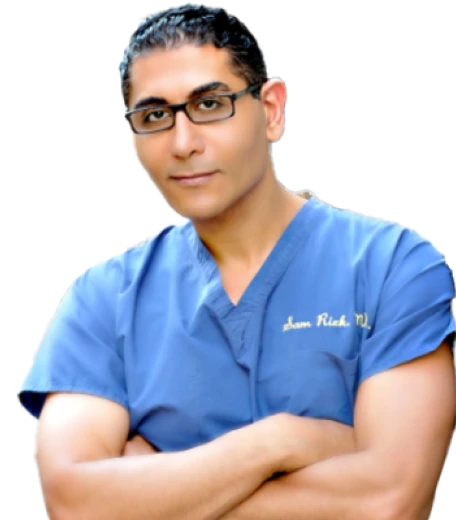
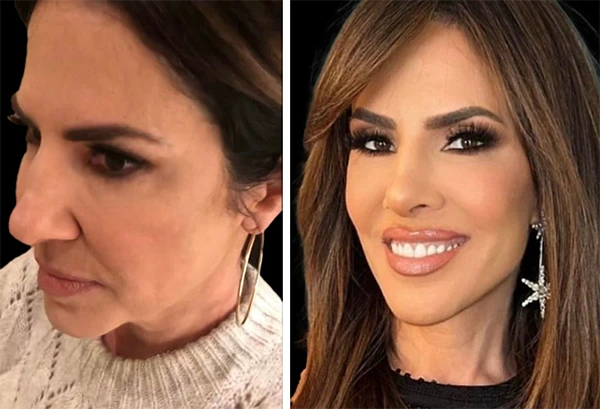
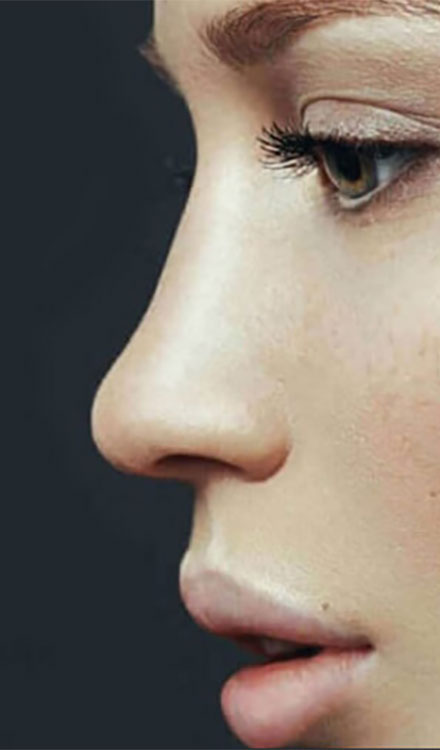
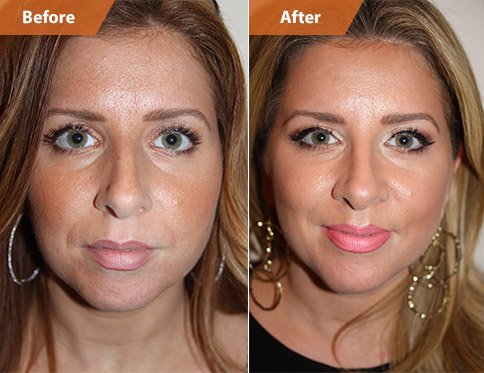
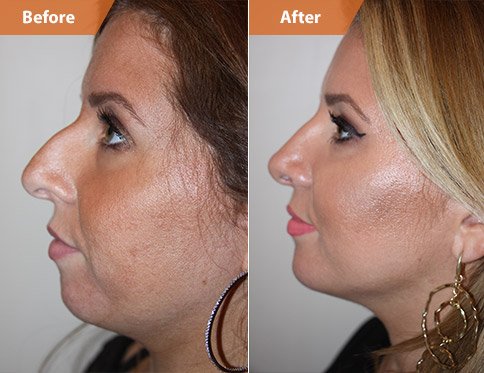
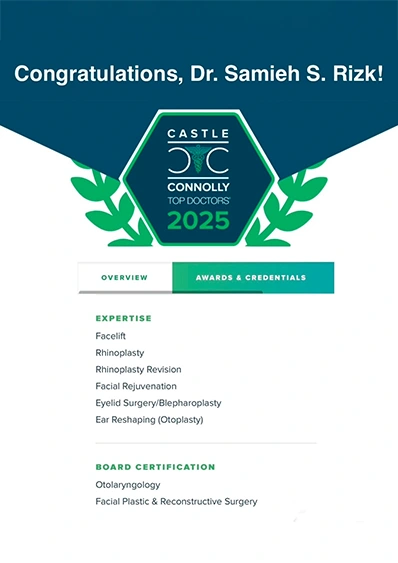
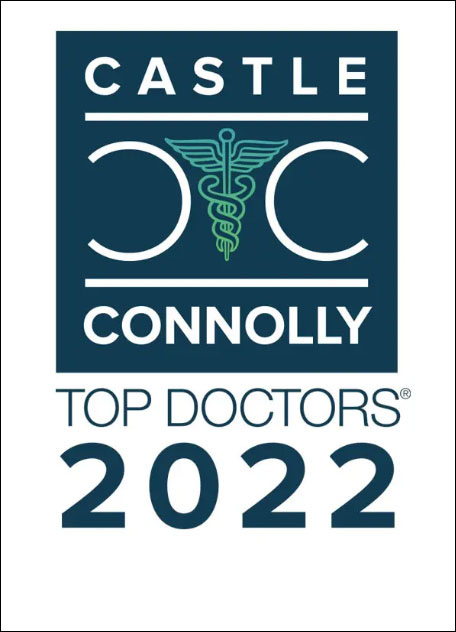
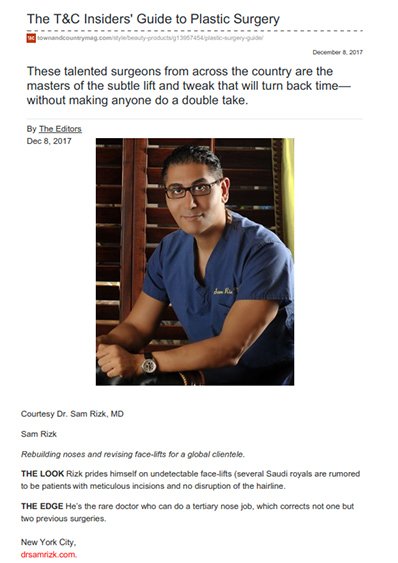
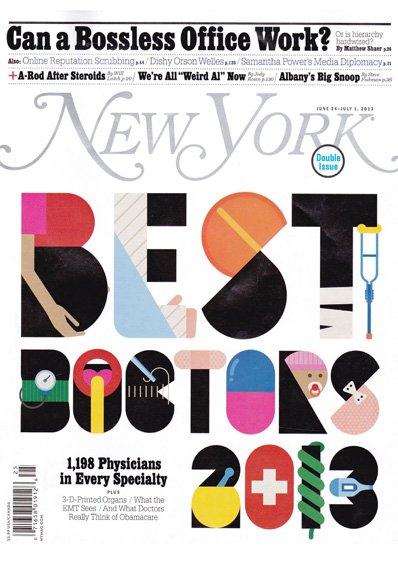
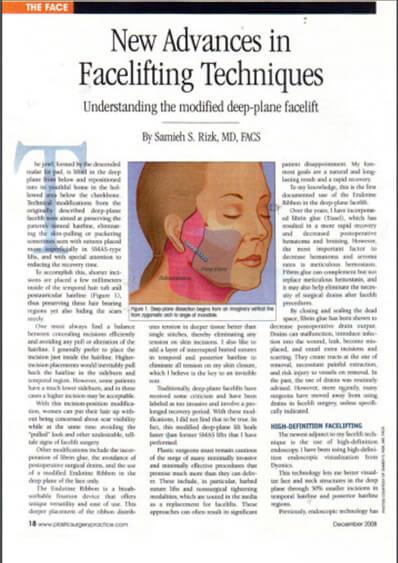


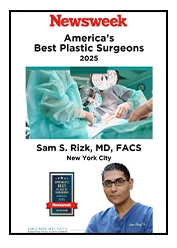
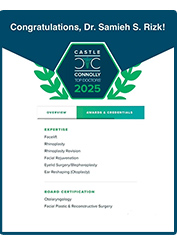
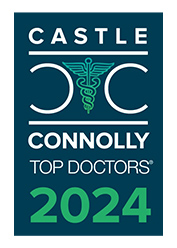

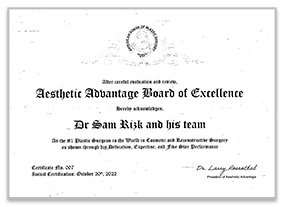
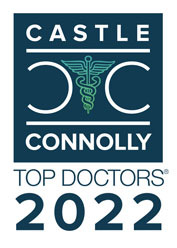

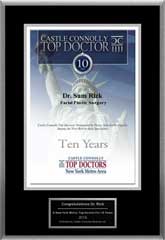
2.jpg)
